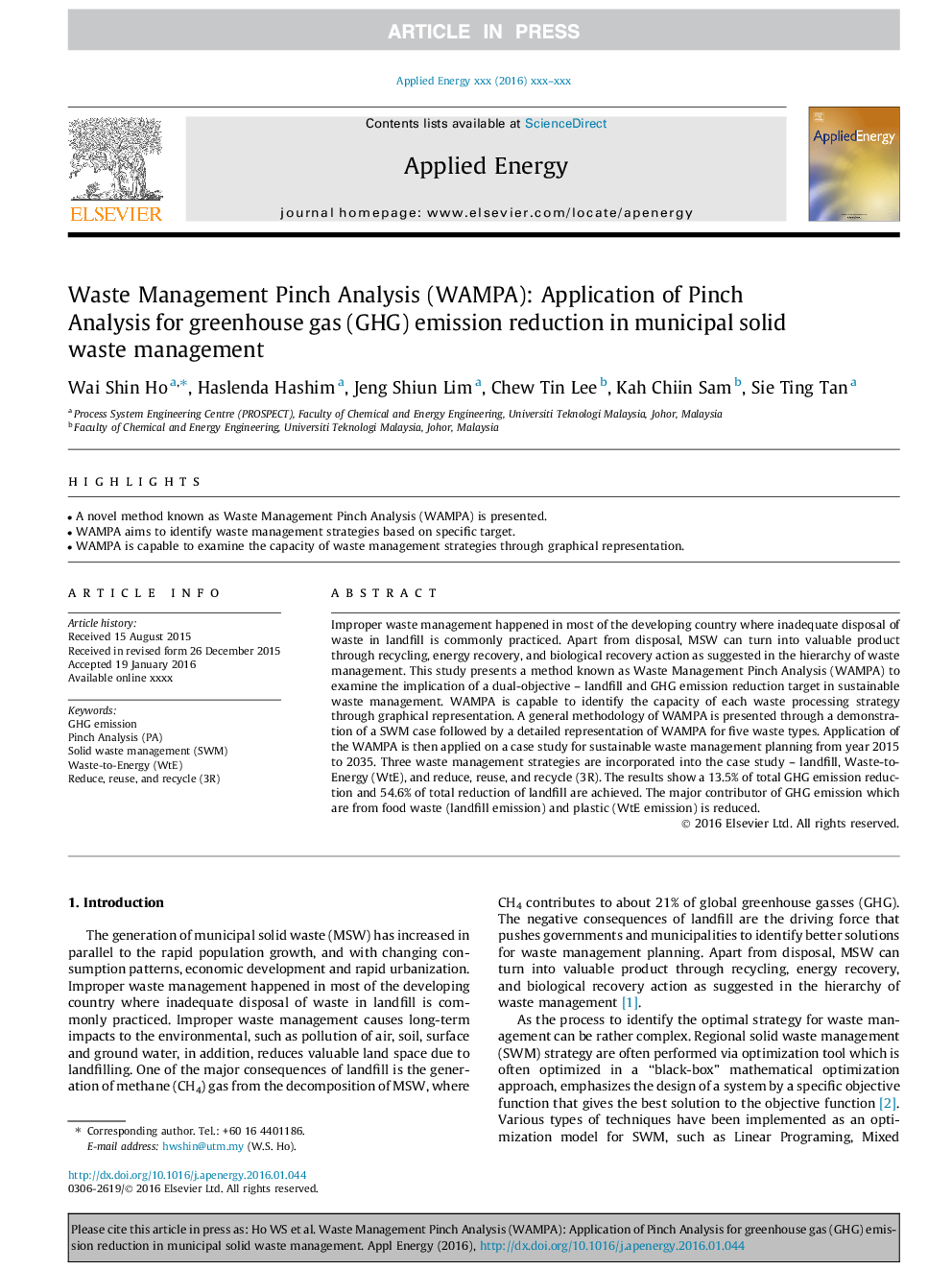| Article ID | Journal | Published Year | Pages | File Type |
|---|---|---|---|---|
| 4917081 | Applied Energy | 2017 | 9 Pages |
Abstract
Improper waste management happened in most of the developing country where inadequate disposal of waste in landfill is commonly practiced. Apart from disposal, MSW can turn into valuable product through recycling, energy recovery, and biological recovery action as suggested in the hierarchy of waste management. This study presents a method known as Waste Management Pinch Analysis (WAMPA) to examine the implication of a dual-objective - landfill and GHG emission reduction target in sustainable waste management. WAMPA is capable to identify the capacity of each waste processing strategy through graphical representation. A general methodology of WAMPA is presented through a demonstration of a SWM case followed by a detailed representation of WAMPA for five waste types. Application of the WAMPA is then applied on a case study for sustainable waste management planning from year 2015 to 2035. Three waste management strategies are incorporated into the case study - landfill, Waste-to-Energy (WtE), and reduce, reuse, and recycle (3R). The results show a 13.5% of total GHG emission reduction and 54.6% of total reduction of landfill are achieved. The major contributor of GHG emission which are from food waste (landfill emission) and plastic (WtE emission) is reduced.
Keywords
Related Topics
Physical Sciences and Engineering
Energy
Energy Engineering and Power Technology
Authors
Wai Shin Ho, Haslenda Hashim, Jeng Shiun Lim, Chew Tin Lee, Kah Chiin Sam, Sie Ting Tan,
